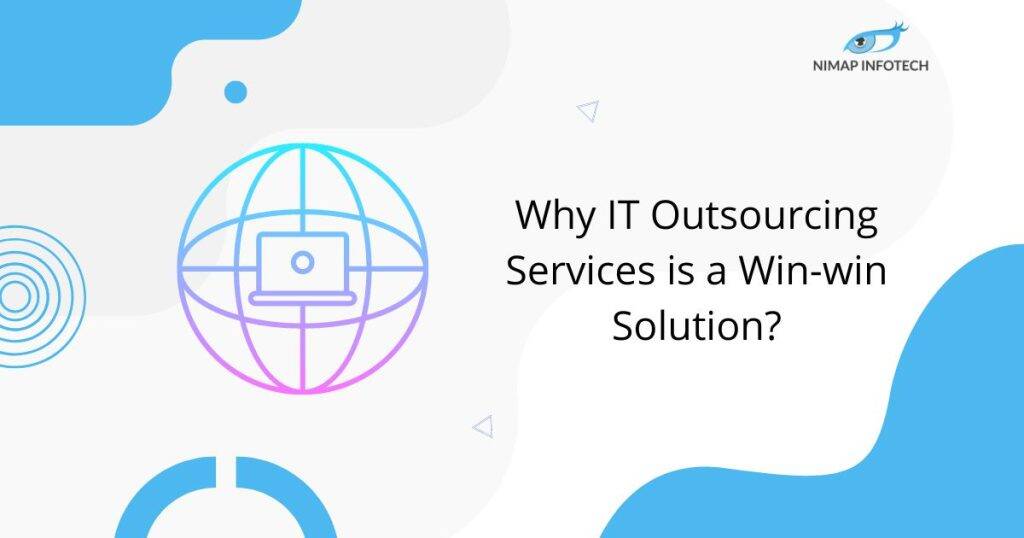Many a time it is seen that when developing mobile apps. You need to write code for both popular mobile platforms namely Android as well as iOS. Android is a platform developed and supported by Google. Whereas iOS is a platform developed by Apple. Sometimes you also need to support another platform such as Windows Mobile. But we shall focus on these two platforms Android and iOS only.
Overview- Xamarin vs Ionic
Often at times, such technology exists that allows solving the real-time problems that computing has. This has lead to the invention of many different technologies. These technologies have helped solve many problems. These problems have long been bothering developers in finding a way out of them. We are going to look at such two different technologies that have provided developers with the solutions that they have been looking for. These two different technologies are Ionic and Xamarin(Xamarin vs Ionic). Ionic and Xamarin have enabled developers to develop cross-platform applications with the ease and flexibility that has never been witnessed or experienced.
One of the proposed solutions would be to write and develop two completely different and separate applications one in Java or Kotlin for Android and the other in Swift or Objective-C for iOS. This approach has its own advantages, for example:
- You can use official tools that are designed for this platform. They tend to get the newer features first.
- You get to use the Native UI and UX. By using the officially supported tools. It’s easy to follow the Human Interface Guidelines (HIG). Each user gets familiar interacting with your application and its look and feels matches with the other applications designed for the platform.
However using this approach has some serious disadvantages: You have to write the same pieces of code twice, for each application. We can consider different programming languages (Java and Swift), different approaches to achieve the same thing on iOS and Android, different techniques to build the GUI, it’s difficult to do anything to avoid writing the same piece of code twice. The situation gets even worse if two different developers create two different iOS and Android applications because two people are likely to implement the same features slightly differently.
Also read: Flutter vs Xamarin: A Developer’s Perspective
Xamarin and Ionic address this issue and they provide powerful tools to reach one goal: to use a single code base or stack of technologies in order to develop both iOS and Android applications. The idea looks very simple and it unleashes a host of nice things.
- The programmer or developer doesn’t need to know two different platform technologies. But they still need to know each of the platform’s features as well as the restrictions. There is no need to write in two different languages and to design GUI in different tools anymore!
- A shared code base eliminates the need for code to be duplicated. The code is common for both the applications for objectives such as networking and business logic. The code can be separated into its own modules, and you still don’t lose the opportunity to create the UI for each of the platforms, or even build the UI once using platform-specific traits.
- Still, there can be two or more developers working on the same application. And the developer who knows iOS better can develop iOS-specific parts and the developer who knows Android better can develop the Android-specific stuff, and any of them can do the common platform-independent stuff.
However, what is the price to be paid for having all of these features? Let’s have a look at the frameworks mentioned above.
General Overview
Xamarin is based on the C# .NET framework whereas Ionic is based on the JavaScript/ TypeScript language.
Xamarin can be used in different types of ways. One option is to preserve as much as possible and only switch the language to C#. That is you can design XIBs, storyboards as well as the Android layout files using Xamarin Studio Tools and write the code in C# instead of Java or Swift
iOS XIBs, as well as storyboards, can be designed in XCode. All of the native frameworks can be easily accessed. The code that does not rely on the UI can be shared between iOS and Android projects. If you want to experience the power of Xamarin, there is another option, you can use cross-platform Xamarin. Forms to design the UI for two platforms at once.
Must read: Five Software Development Trends For 2021
On the other hand, Ionic has chosen JavaScript-based languages.
The Ionic framework allows developers to create highly interactive, cross-platform mobile applications that can be deployed across iOS, Android as well as Windows Mobile devices. These hybrid applications have a range of native functionalities, exhaustive gestures as well as customizable tools to enhance user-friendliness. Those powerful capabilities have been brought to Ionic. This is because it provides mobile responsive, user-friendly HTML, CSS, and JS components to developers.
Let’s see the advantages and disadvantages of Ionic:
Advantages:
- Apps can be coded one and can be deployed across Android, iOS and Windows mobile devices
- The use of AngularJS creates a powerful SDK for building any kind of robust applications that are rich and user-friendly
- The framework focuses on HTML, CSS, and JS that enables quick development, low costs as well as minimal maintenance.
Disadvantages:
- In-app performance may not be as swift as that offered by native apps that have been developed for each device
- The use of AngularJS demands that developers should have a specific skill set for building complicated applications.
- Building in-app navigation can be notably complex in structure as the UI-router is tricky to maneuver at present.
Ionic is a brilliant choice for creating basic native functionalities. These functionalities within an application that could be run on multiple devices and operating systems. The main ionic advantage surrounds the simplicity that arrives with developing an app once, rather than multiple times for separate devices. The nature of the framework also speeds up the development of apps as well as reducing the cost of the app and eliminates the need for maintenance.
Applications developed in Ionic may not perform as well as those developed natively. So some developers can rely on natively developed apps for flawless performance and full use of native functionalities.
Conclusion(Ionic vs Xamarin):
We have seen the different frameworks as well as compared the advantages and disadvantages of these. If you’re looking to hire Xamarin developers or looking to hire Ionic developers then do contact us, we are just a call away. You can also hire xamarin app developer in Dubai, UAE. and hire Ionic developer in Dubai, UAE to build your App. We can provide you the best-experienced developers to onboard your mobile project. If you’ve found this article informative then do check out our other articles as well. Hope you like this blog on Xamarin vs Ionic.
Author
-

With 14+ years in IT and entrepreneurship, I co-founded Nimap Infotech, a digital transformation company that has delivered 1200+ projects and built a team of 400+ engineers. I’ve also led mobile development teams at Accenture India and IBM Apple Garage and developed a network of 7k+ iOS and Android developers. As an Angel Investor, tech advisor, and mentor, I actively engage with the startup ecosystem.
View all posts








